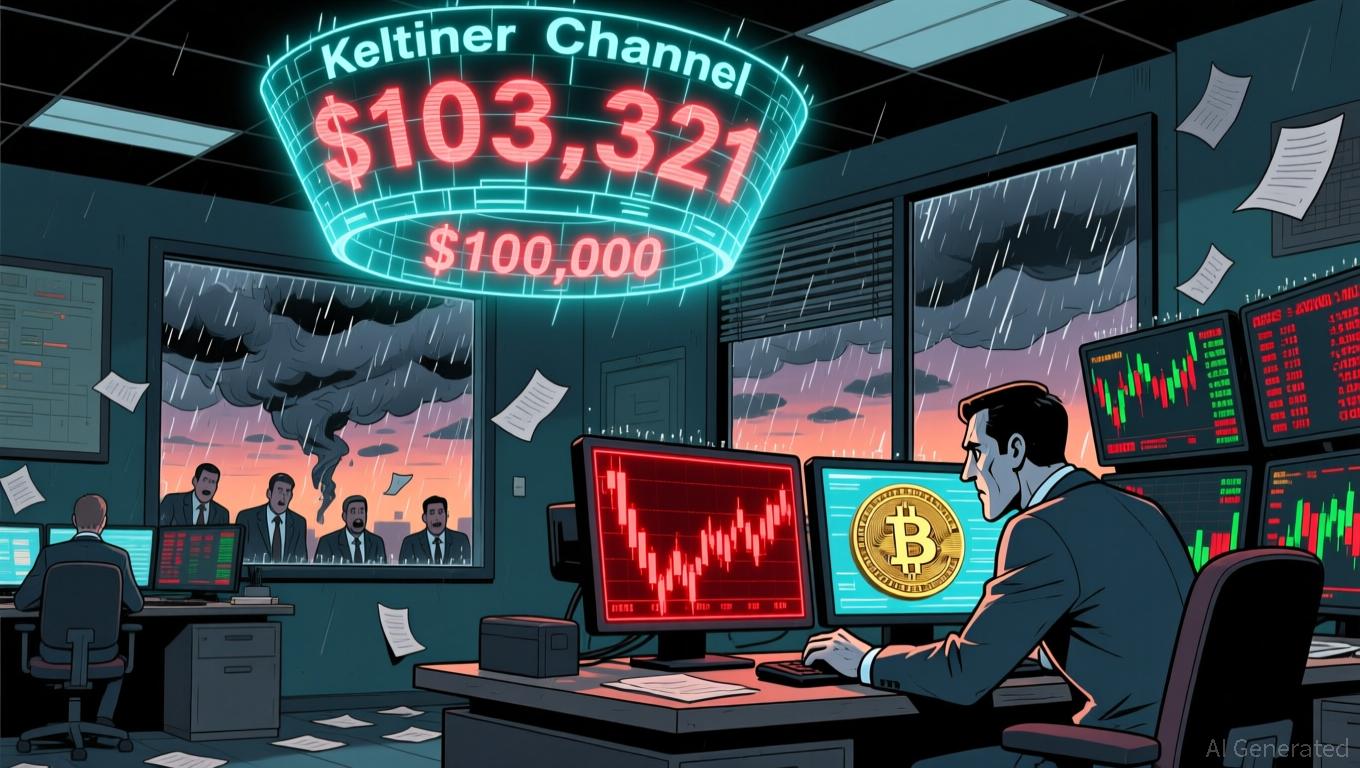Bitcoin News Update: Market Divided: Is Bitcoin's Decline a Temporary Adjustment or the Start of a Downtrend?
- Bitcoin fell below $100,000 on Nov. 4, 2025, triggering $1.3B in liquidations and sparking fears of a broader market correction. - Institutional investors rotated capital amid ETF outflows and macroeconomic uncertainty, with spot Bitcoin ETFs losing $187M in a single day. - Analysts remain divided on whether the decline signals a temporary pullback or a deeper bearish phase, as technical indicators show bearish momentum. - Geopolitical risks and divergent corporate strategies (e.g., Sequans redeeming deb
On November 4, 2025, Bitcoin dropped below the $100,000 mark for the first time in three months, sparking over $1.3 billion in crypto market liquidations, as reported by a
This movement follows a 20% slide from Bitcoin’s October high near $124,500, with the cryptocurrency now hovering around $106,600—a level many analysts consider crucial, based on data from

Institutional moves have added to the selling. Sequans Communications paid off half of its convertible bonds using 970 BTC (worth $94.5 million), while
Broader market sentiment is also being dampened by geopolitical tensions. The upcoming Supreme Court review of tariffs from the Trump administration has unsettled investors, with some Wall Street leaders warning of a potential 10% drop in equities.
Despite the recent volatility, some investors see this as a chance to buy. A major investment firm acquired 397 BTC for $45.6 million at a price of $114,771, bringing its total holdings to 641,205 BTC (valued at $69 billion). “This is a normal ‘step back’ in the evolution of ETFs,” said ETF analyst Eric Balchunas, who described the pullback as “healthy” after SPY’s 83% rally since late 2022, according to
Bitcoin’s next direction will depend on whether buyers can maintain the $100,000 level—a psychological milestone that has historically attracted institutional interest during market dips. For now, the market remains unsettled, with experts divided on whether this is a routine correction or the start of a longer-lasting decline.
Disclaimer: The content of this article solely reflects the author's opinion and does not represent the platform in any capacity. This article is not intended to serve as a reference for making investment decisions.
You may also like
Dogecoin News Update: SEC Sets November 2025 as Pivotal Deadline for Dogecoin ETF Approval
- Bitwise files a fast-track SEC 8(a) ETF application for Dogecoin , targeting November 2025 approval if regulators remain silent. - The move reflects growing institutional demand for crypto exposure amid regulatory uncertainty and a competitive ETF landscape. - Grayscale's DOJE ETF and rivals' XRP/Dogecoin products highlight intensified competition, with $24M+ in early trading volumes. - Analysts project 300% DOGE price gains if resistance breaks, while SEC's crypto-friendly leadership and legal battles w

Ethereum Updates Today: SharpLink Moves ETH—A Bid for Stability or Signs of Major Overhaul?
- SharpLink Gaming transferred $14M ETH to OKX ahead of Q3 earnings amid crypto market declines. - The move highlights challenges for crypto-holding firms as ETH drops 25% in 30 days and stocks like SBET fall 4.28%. - Institutional investors increasingly use ETH staking for yield, contrasting Bitcoin-focused strategies lacking comparable returns. - CertiK emphasizes treasury management integrity as spot crypto ETFs shift focus to secure asset handling amid governance scrutiny.

Tesla’s $1 Trillion Musk Deal: Strategic Move to Keep CEO or Example of Excessive Corporate Power?
- Tesla shareholders approved a $1 trillion compensation package for Elon Musk, tied to aggressive targets like $8.5 trillion valuation and 20 million vehicle deliveries. - Critics call the package excessive, while Tesla defends it as critical to retain Musk amid his SpaceX, xAI, and Trump administration commitments. - The Texas-based approval bypasses Delaware's strict governance rules, sparking debates over "race to the bottom" in corporate accountability. - Skeptics question feasibility of targets, with

The Quantum Computing Hype Cycle and What It Means for the Valuation of Cybersecurity Stocks
- Quantum computing threatens RSA/ECC encryption by 2025, accelerating post-quantum cryptography (PQC) adoption and investment in quantum-safe firms. - NIST's 2030 PQC standards and "harvest now, decrypt later" strategies force urgent infrastructure upgrades, with governments stockpiling sensitive data. - SEALSQ leads the quantum-safe sector with $220M liquidity, $17.5M 2025 revenue guidance, and PQC-embedded semiconductors for IoT/automotive sectors. - High-risk plays like BTQ (blockchain PQC) and pre-rev
